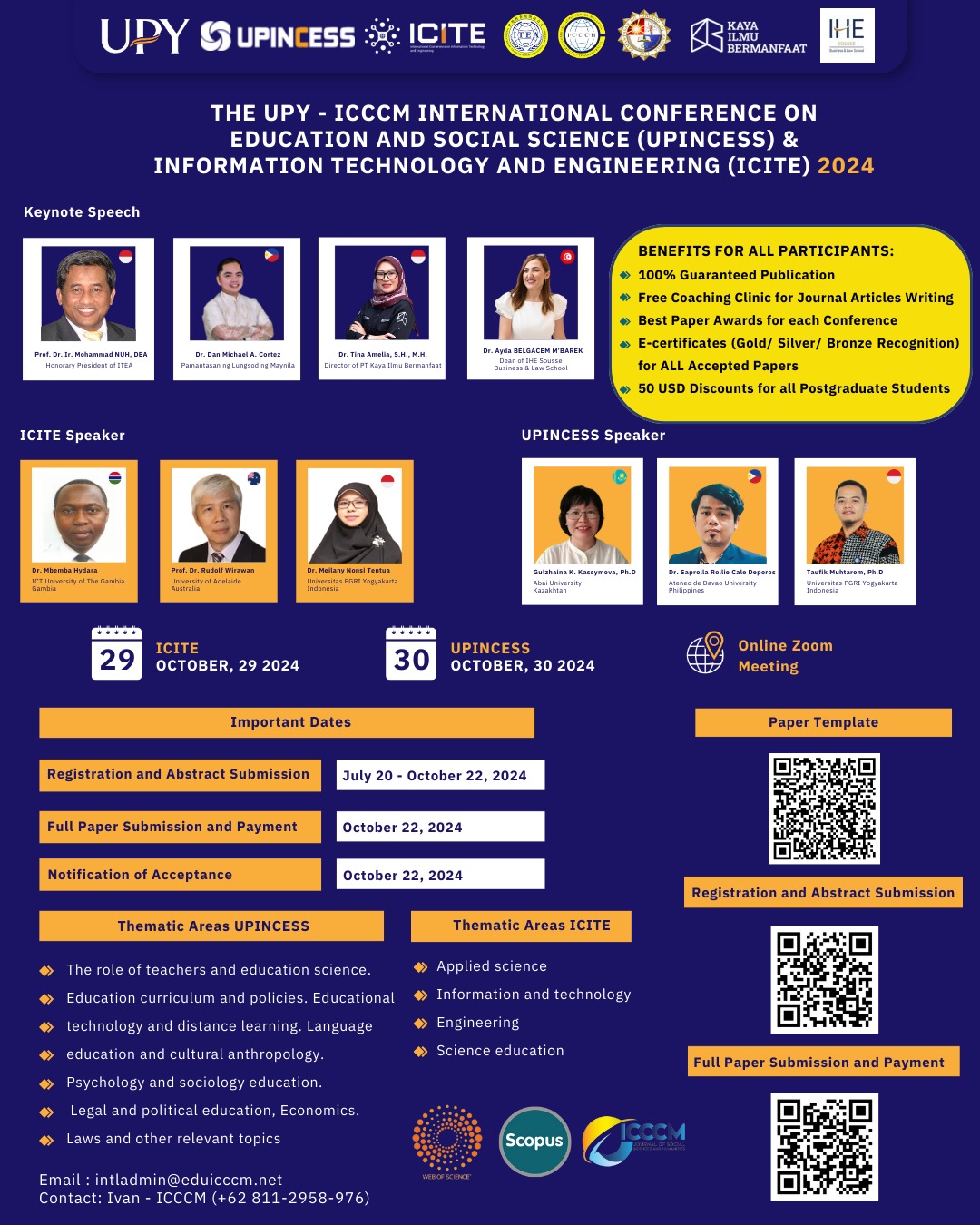Character Education Values in The Wayang Topeng Kedung Panjang Folklore
DOI:
https://doi.org/10.53797/icccmjssh.v3i2.2.2024Keywords:
Folklore, wayang, character education valuesAbstract
The Wayang Topeng Kedung Panjang Folklore of Pati Regency has been recognized as one of the intangible cultural heritages in the Decree of the Minister of Education, Culture, Research, and Technology Number 372/M/2021. As an intangible cultural heritage, this art contains character education values that can be utilized as a material for character education development, especially in moral, language, and literature lessons.
Through a descriptive-qualitative approach, research has been conducted to identify the character values contained in the Wayang Topeng Kedung Panjang folklore. The results show that there are several character education values contained in the Wayang Topeng folklore. They are religious values, nationalism, independence, mutual cooperation, and integrity.
The characters in the story always prioritize religious values in their actions and attitudes, reflecting religious values. In addition, the spirit of preserving and appreciating reflects the value of nationalism. The value of Independence is reflected in the ability of characters to overcome problems with their own skills and courage. The value of mutual cooperation is highlighted in the Wayang Topeng folklore, where characters work together and help each other in facing problems. The value of integrity is reflected through characters who always uphold the values of honesty, trust, and loyalty in their actions and speech.
Overall, the character education values contained in the Wayang Topeng folklore are worthy of appreciation and can be used as a material for character education development in moral, language, and literature lessons. Therefore, efforts are needed to promote and preserve the Wayang Topeng Kedung Panjang folklore as an intangible cultural heritage that has high character education values
Downloads
References
Alby, H. M., Slamet Subiyantoro, & Suyitno. (2022). The Functions and Values of Local Wisdom in the Folklore of Kudus Regency with the Relevance of Learning Indonesian Language in Schools. ANP Journal of Social Science and Humanities , 3(2), 51-56. https://doi.org/10.53797/anp.jssh.v3i2.9.2022
Dhanurseto Hadiprashadha. (2019, August). Wayang Kulit as New Media in Dialogical Communication. Proceedings of the 1st Annual Internatioal Conference on Social Sciences and Humanities (AICOSH 2019), 116–120. https://doi.org/10.2991/aicosh-19.2019.24
Dorson, R.M. (1971). Introduction: Folklore and Traditional History. Journal of the Folklore Institute. 8 (Special Issue: Folklore and Traditional History). 79-81. https://www.jstor.org/stable/3814096
Harahap, N., Munawarah, K., Usaida, E., & Nasution, P. (2023). Wayang Kulit as a Media to Support Javanese and Indonesian Languages. Journal on Education, 5(3), 6132-6139. Retrieved from https://jonedu.org/index.php/joe/article/view/1382
Kanzunnudin, M. (2017). Menggali Nilai dan Fungsi Cerita Rakyat Sultan Hadirin dan Masjid Wali At – Taqwa Loram Kulon Kudus. Jurnal Kredo, 1(1), 1 – 17. https://doi.org/10.24176/kredo.v1i1.1748
Maryanti, I., & Mukhidin, M. (2017). Penggunaan Media Audio untuk Meningkatkan Kemampuan Menyimak Cerita Rakyat pada Mata Pelajaran Bahasa Indonesia Kelas V SD Negeri Lengkong. Didaktik : Jurnal Ilmiah PGSD STKIP Subang, 2(2), 357 - 366. https://doi.org/10.36989/didaktik.v2i2.50.
Mustofa, H. A., Gunawan, G., & Kosim, K. (2021). Validity of documentary video learning media based on local content traditional musical instruments on sound waves. Jurnal Pijar Mipa, 16(5), 576–582. https://doi.org/10.29303/jpm.v16i5.1189
Downloads
Published
How to Cite
Issue
Section
License
Copyright (c) 2024 Angga Krisbianto, Sri Utaminingsih, Fitri Budi Suryani

This work is licensed under a Creative Commons Attribution-NonCommercial-ShareAlike 4.0 International License.




